Email Marketing
Oops: Seven Tips for Writing an Apology Email
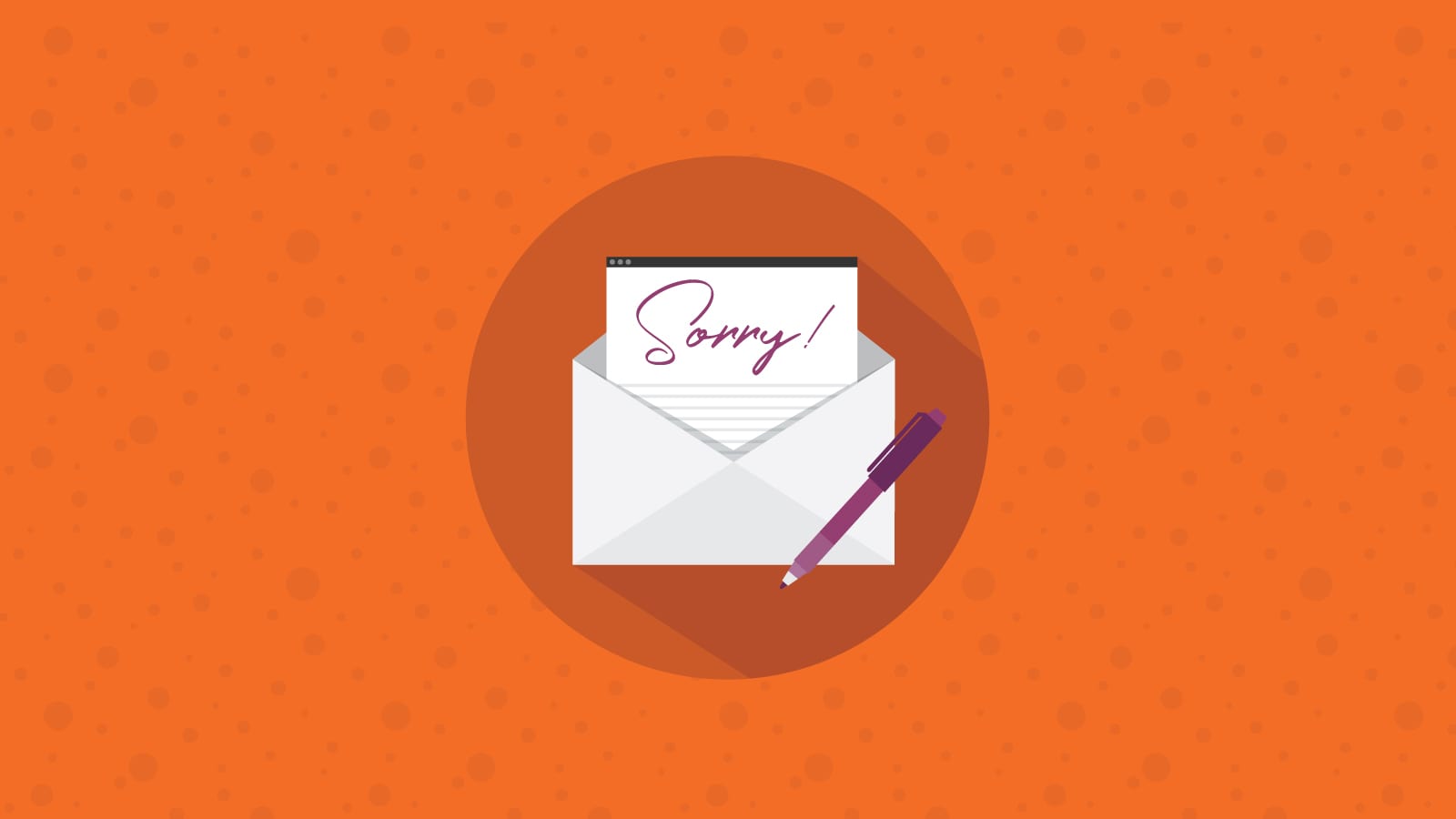
Email Marketing

Oops, you did it again. You played with their hearts, got lost in the game.
You didn’t mean to, of course, but you made a mistake, and now it’s in the inboxes of thousands of subscribers.
Don’t worry. An apology email isn’t the end of the world. In this article, we’ll help you face the music by demystifying when to send an “oops” email, what to include, and give you some tips on how to write an email correcting a mistake. Finally, we’ll leave off with a pro-tip on how Email on Acid can help you avoid common pitfalls that lead to apology emails.
An “oops” email (also known as an apology email) is a message from an email marketer or business owning up to a mistake and attempting to fix it. Usually, it’s not too late to say sorry. In fact, apologizing and owning up to your mistake can be good for your business and your brand reputation. Sending out an apology email can help you:
When you own up to your mistakes in an apology letter, you demonstrate that you’re both willing to acknowledge your errors and that you’re able to be open about them to your customers. While it’s never a great thing to be wrong, admitting to a mistake can foster an atmosphere of transparency that leads to better customer relationships and a better user experience.
If you send a sincere apology letter that accepts full responsibility for your mistakes, chances are your customers will feel like they’re being respected. A fake “apology” won’t get you anywhere, especially after you’ve made a mistake. But you can build a better relationship with your subscribers by making them feel seen with a personal apology.
Making a mistake is bad, but it’s even worse if you continue to spiral. By resending an email with a correction and with a clear plan for moving forward, you maintain control of the customer experience. In fact, having a clear plan for correcting a mistake also signals to your customers that they should continue to trust your company name because you’re willing to keep their best interests in mind. After all, we don’t want dissatisfied customers to take to social media to cancel your brand for failing to apologize.
The big question here is, what warrants an apology email, and how should you go about it? There are plenty of reasons to send an apology email, but not every little hiccup or snafu warrants one.
Before you start creating your apology email, ask yourself, “Was anyone affected or potentially offended by my mistake?”
If the answer is “no,” you’re probably good to move on without sending out an “oops” email. For example, a minor typo usually doesn’t require an apology. However, to prevent future mistakes, check out how to implement solid email content checking as part of your email marketing strategy to avoid future flubs.
On the other hand, the following are some reasons to send an apology email:
This is by no means an exhaustive list, so use your best judgment. As a rule of thumb, anything that possibly impacts or offends your subscribers should warrant an “our bad—still friends?” apology email.
“Oops!” by itself isn’t good enough. Remember, an “oops” email is only good if it’s actually sincere. Let’s go over some of the key components of an apology email:
Ready to get started? Here are some tips for crafting the perfect “oops” email to help minimize damage to your brand’s reputation:
Let’s dive into each of these below.
Is it too late now to say sorry? If you’re wondering this, chances are, it might be.
Earlier is always better, no matter the particulars of your email mistake. For instance, let’s say you sent an expired promotion in your original email. The faster you follow up with an apology message and include the correct information, the happier your customers will be. Promptness can minimize the downtime your customers experience. You’ll receive fewer calls, emails, and customer complaints if you own up to your mistake and correct it in a timely fashion.
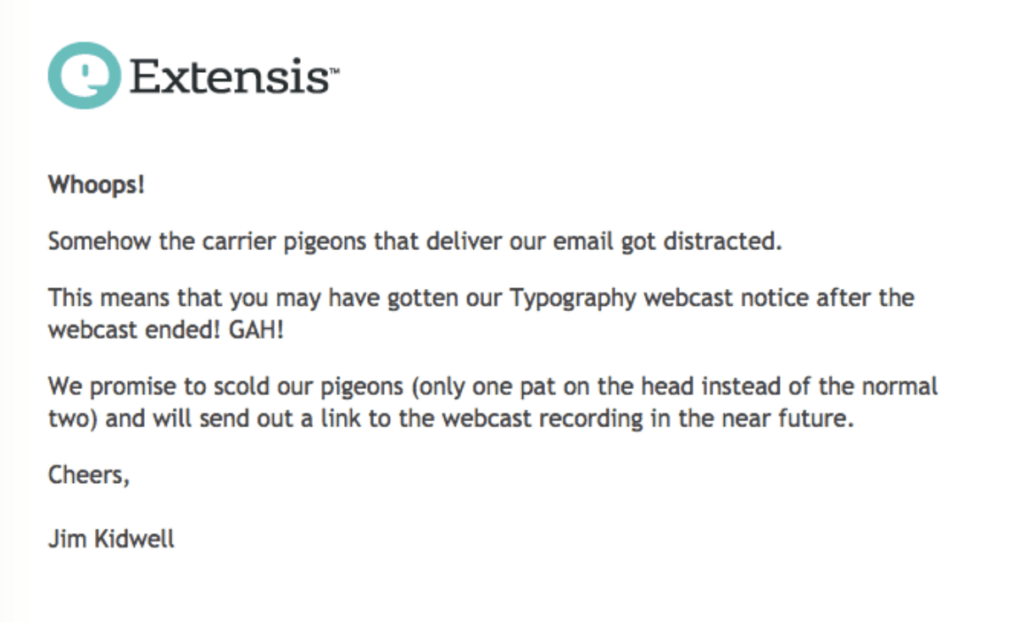
The #1 rule of apologies is to be transparent. Be up front and unmistakably clear about why your brand is emailing them. We’ve gone over the subject for apology emails above, so let’s go over the first piece of your apology letter that your subscribers will see: the “oops” email subject line.
In a nutshell, keep it short, simple, and sincere. Remember, subject lines and preview text let subscribers know why you’re emailing them at a glance. Be transparent about it in your inbox display, so your audience knows what’s going on.
Again, most of the time, an apology email won’t be addressing an end-of-the-world issue. So, the reason for the apology is only going to be as “bad” as your email language makes it out to be.
Notice the difference between:
“We are so sorry for this error. We truly apologize and will make sure it never happens again.”
And:
“Oops! It looks like we sent you the wrong thing. Here’s the real (link/promo code/etc.) You’ll have much better luck using this one instead.”
The first apology borders on begging for forgiveness, which isn’t necessary. The second plays it off cool like, “yep, we made a mistake, but we’re all good with moving on if you are.” This is a much healthier approach when apologizing to your audience. But remember, be geniune. Your audience will immediately notice if your apology seems fake
Don’t feel like you have to channel your inner lawyer and kick your brand voice and approachable tone to the curb. Your subscribers love you for you, so sprinkle your token flare into your message as well.
Of course, this all depends on the severity of the situation. If we’re talking about a broken link, it’s probably okay to be playful. If you’ve just experienced a data breach, it may even be appropriate for the email to be serious and come from an executive within the company, be it marketing, IT, or even the CEO themselves.
Subscribers are quick to forgive if you hit all the right points, but they’re usually even more responsive if your apology doubles as a promotion. If your “oops” email achieves conversion, you’re golden.
When you send an apology email, you’ll definitely get kudos from your community for being transparent, timely, and resolution-oriented.
But that doesn’t negate the fact that they’re also now aware of your hiccup. People make mistakes (it’s only human, after all), and emails are sent by imperfect people. But brands are held to a higher standard.
Depending on the nature of the apology email, it might affect your reputation with subscribers. This is more likely to be the case the more severe the issue is, such as a privacy breach.
In the event of a much larger issue, such as a privacy breach with further-reaching consequences, we also recommend having a PR strategy in place to help minimize any possible backlash or media coverage.
“Oops” emails are nothing new. Brands have been apologizing for millennia (maybe not that long, but you get the gist).
Need more inspiration? Check out these prime examples of apology emails for a little creative inspiration as you craft your face-saving message.
After realizing their customers were impacted by technical glitches the night before, Joules sent out the following email to take the sting off of the negative user experience.
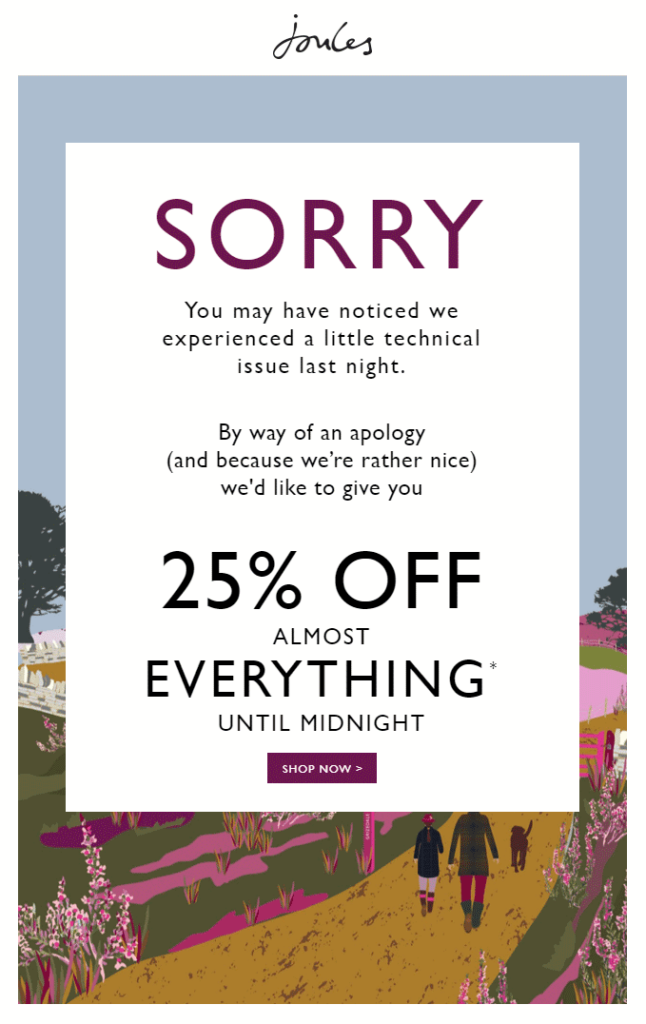
Outdoorsy accidentally sent out “welcome” emails to existing customers. They used their apology email as a chance to correct the mistake and lay out the next steps for the subscribers to follow. This gives clear direction and builds trust in the brand name.
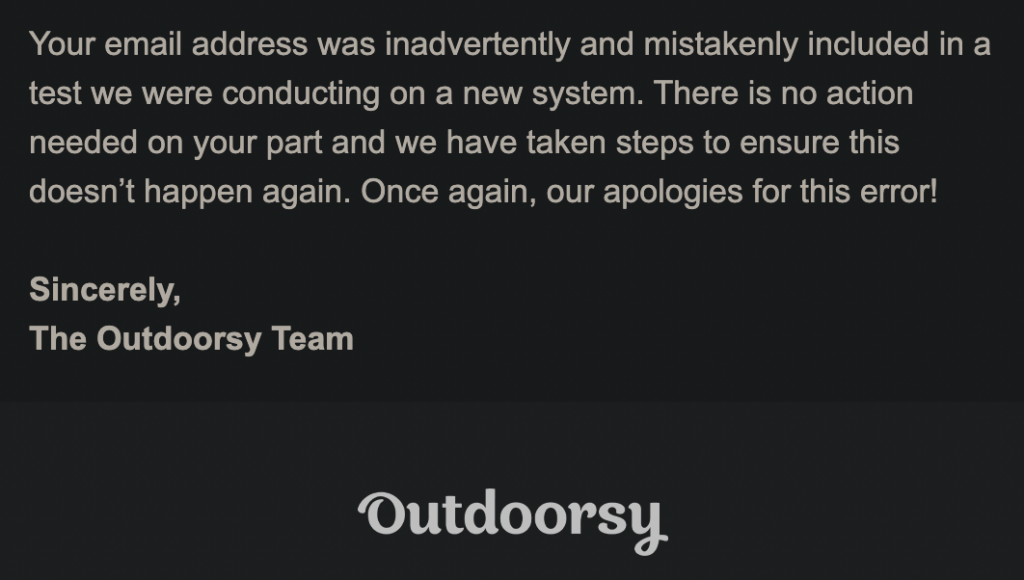
Check out the “oops” email example from Wistia. They sent out a broken link and infused a bit of humor in their apology to take the sting off of their mistake.
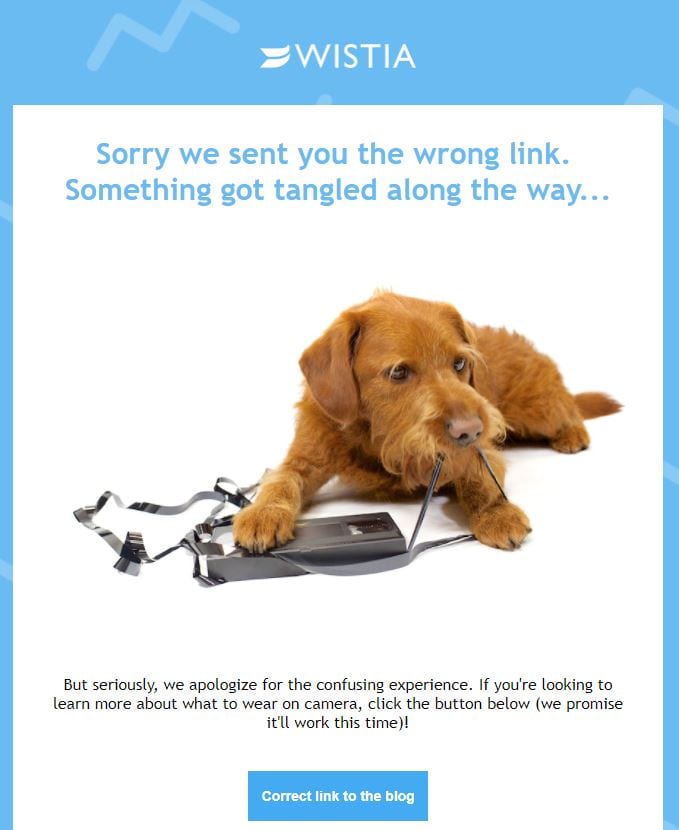
At Sinch Email on Acid, we like to say, “Don’t guess, test!” Why leave the success of your email to chance when you can use our tools to catch common mistakes that take up more of your time to fix?
For instance, at Email on Acid, our tools can:
Find out more about email testing and previews from Email on Acid.
Even though we’ve given you some good tips on how to craft an apology email, we recommend that you check out our testing suite to help keep yourself from landing in hot water in the first place.
This article was updated on June 8, 2022. It was first published in August of 2019.